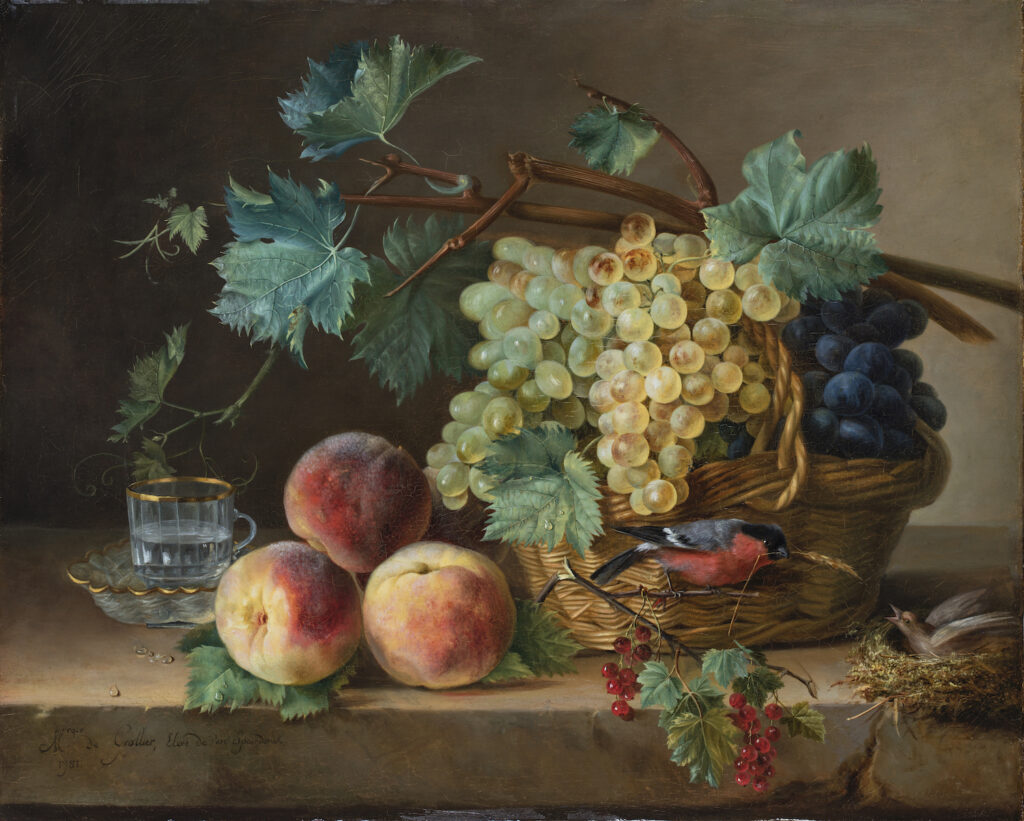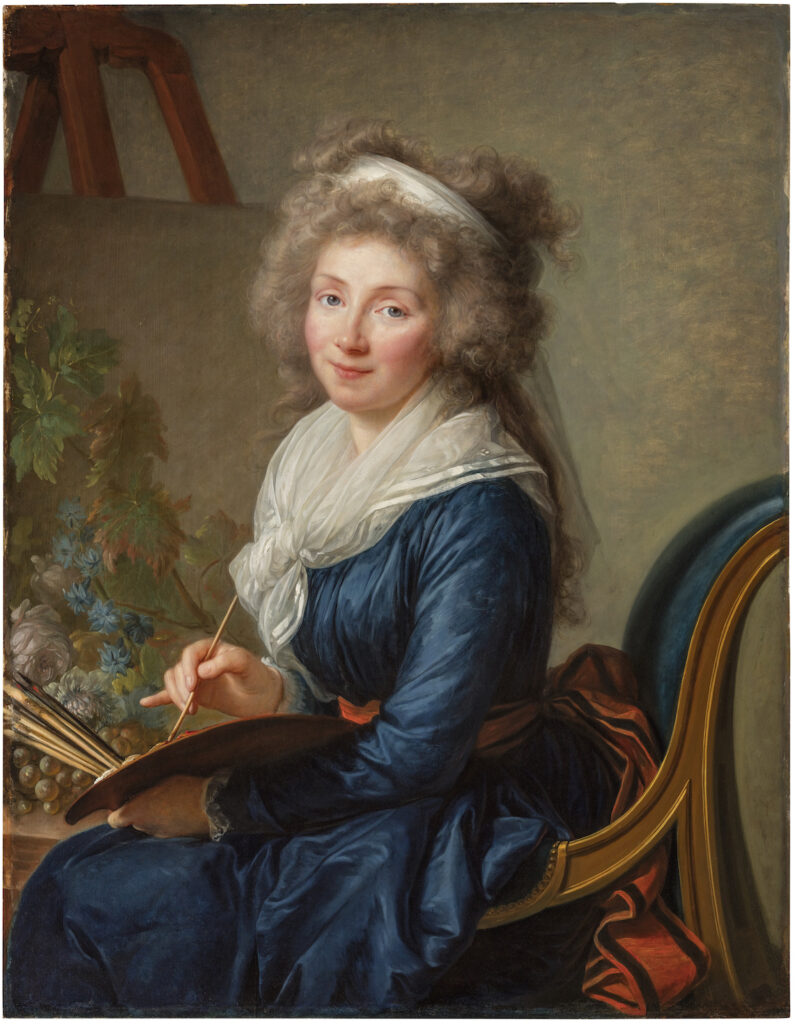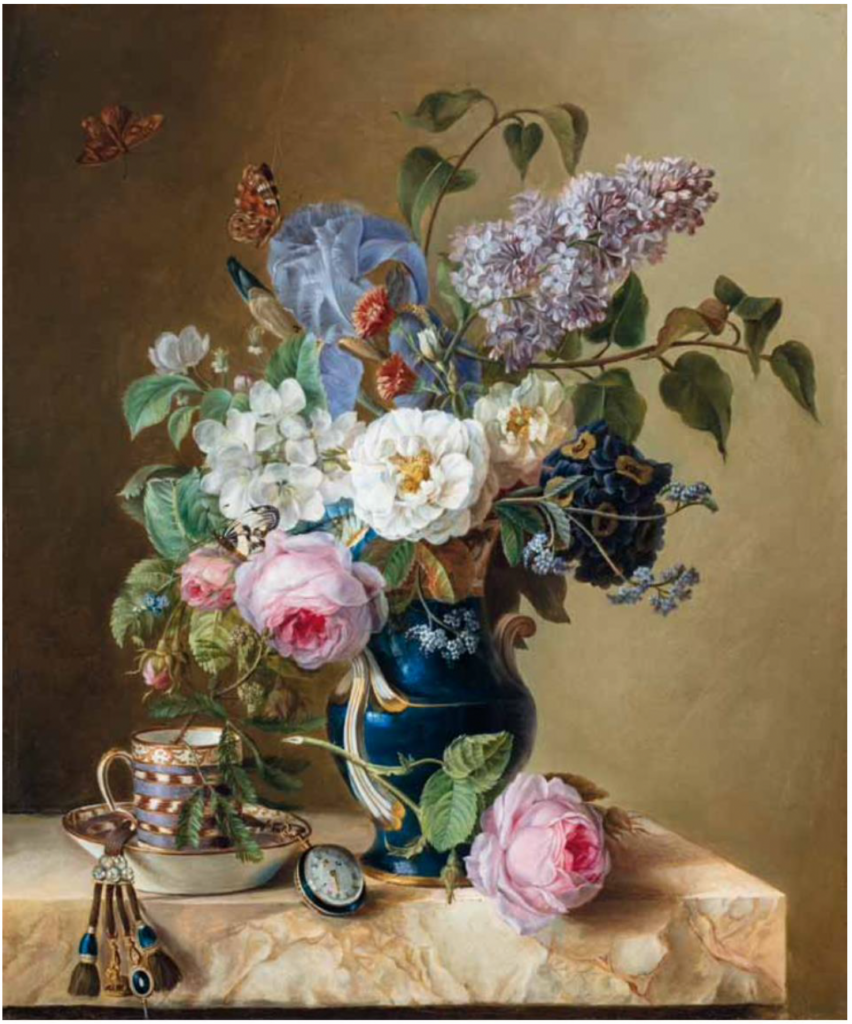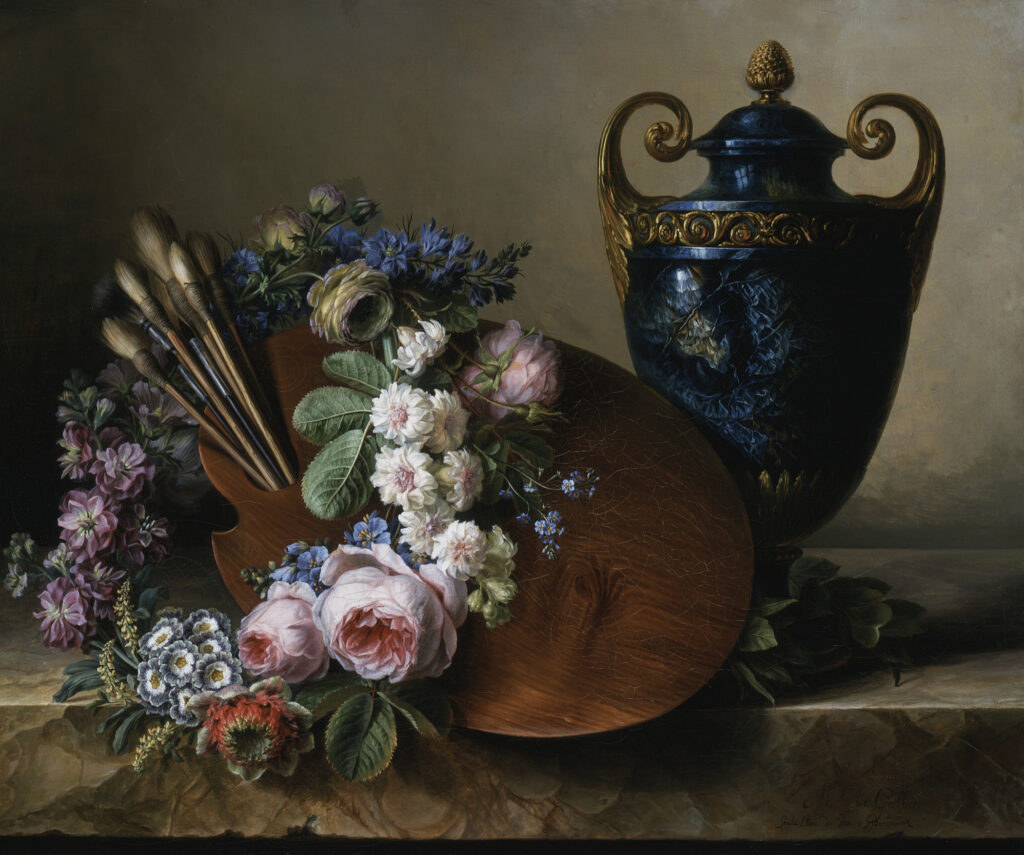Guest post by David Pullins, Jayne Wrightsman Curator, The Metropolitan Museum of Art

An unconventional biography
Charlotte Eustache Sophie de Fuligny-Damas, marquise de Grollier (1741–1828), was a highly accomplished amateur painter who is almost entirely forgotten today despite her central place in the international European artworld during her lifetime. “Amateur” in eighteenth-century France implied an elevated social class rather than a lack of seriousness or skill and Grollier’s story weaves together issues of manual dexterity, gender and privilege by birth to challenge conventional biographies of women makers in this period. At nineteen she wed Pierre Louis, marquis de Grollier (1730–1793), thereby adopting an aristocratic title that prevented her from painting professionally or exhibiting her work publicly.

Though surviving works by Grollier number around twenty paintings on canvas and stone, the fact that her paintings existed largely outside exhibition and market culture—indeed, they remained overwhelmingly with her descendants for two centuries—resulted in near invisibility. In effect, in Grollier’s case, it was not disadvantage by birth but, rather, her extreme privilege that undercut her formidable artistic legacy.
Early training
Grollier learned to paint from Gérard van Spaendonck (1746–1822), a Dutch émigré artist who enjoyed tremendous success in late eighteenth-century Paris. Van Spaendonck arrived in the city in 1769 and became official miniature painter to Louis XVI in 1774 and a member of the Académie Royale in 1777. Always a specialist of flower painting, in 1780 he succeeded Madeleine Françoise Basseporte as peintre des plantes du Jardin du Roi (official plant painter to the king). Grollier regularly signed her own works with variations on “élève de Van Spaendonck” (student of Van Spaendonck).

The height of Grollier’s activity as a painter appears to date from the early 1780s until the French Revolution. During the pre-Revolutionary period, Grollier moved in high social circles and had apartments adjacent to those of Queen Marie Antoinette in the Tuileries Palace. A small ivory portrait signed by Grollier representing Louis-Charles de France, son of Louis XVI, documents her strong royalist sympathies.

Grollier’s husband died at the guillotine on December 26, 1793, and Grollier went into exile. During this period, she traveled through Switzerland, Germany, Florence, and Rome. Grollier spent most of this period with Alexandre Charles Emmanuel de Crussol-Florensac (1743–1815). The two appear to have initiated a lifelong companionship some time before the death of Grollier’s husband. In 1787, Vigée Le Brun painted a spirited portrait of Crussol, today at The Met, that is among the portraitist’s most exceptional works. In 1788, Grollier commissioned Vigée Le Brun to produce a portrait of herself, seated at an easel painting a still life. Both portraits are painted on wood panel, attesting to a desire for the most extraordinary crystalline surfaces; they are similarly scaled, and they remained together in Grollier’s collection until her death.

Later years
During her final decade, returned from exile, based at her château at Épinay-sur-Seine, Grollier seems to have largely abandoned painting in favor of major landscaping initiatives. She engaged Louis Étienne Héricart de Thury, who recalled her decision to create a lake and move entire islands, including their trees and plantings, to better suit her plan.
In her memoires, Stéphanie Félicité, comtesse de Genlis, recounted that in the early nineteenth century, Grollier received the celebrated German explorer Alexander von Humbolt at Épinay–sur–Seine. She animated her gardens for him with actors in a theatrical showing meant to allude to his exploration of the Americas. This visit may have aligned with her interest in plants originating outside Europe, facilitated by her early relationship with the Jardin des Plantes.

During her last years, Grollier continued to act as a significant patron and friend of artists. She continued to commission works, including an idealized marble bust from Canova for their mutual friend the art theorist Quatremère de Quincy.
Accolades during her lifetime and reemergence
Most of our knowledge about the marquise de Grollier’s artistic accomplishments comes from an obituary Etienne Soulange Bodin published in the Annales de la société d’horticulture of 1828. In addition, there is lively discussion of her work in letters and journals by leading artistic figures from the 1770s through 1820s who praised her still-life paintings. The sculptor Antonio Canova, who knew Grollier during her exile in Rome following the French Revolution, called her “the Raphael of flower painting.”

The leading woman painter of the century, Elisabeth Louise Vigée Le Brun, recalled that early in her own career she had enjoyed Grollier’s company more than that of anyone in Paris. Vigée Le Brun also opined that Grollier “painted flowers with great superiority,” outshining even those produced by members of the Académie Royale. Art and letters document her close relationship with other major figures of the period, including Jean-Baptiste Greuze and Hubert Robert. By the 1820s her canvases had joined the most illustrious collections, including that of Empress Josephine.
References to Grollier drop precipitously in the years immediately after her death. Individual works gifted to friends descended as tokens of a lost social world or as family mementos. With the core group of her works remaining with her direct descendants any cohesive sense of her legacy in paint was impossible. In 1996, the family parted with an important statement of her artistic lineage, known as Still life—An Homage to Van Spaendonck, held at LACMA; and Still Life of Flowers with Stone Vase, ca. 1785, purchased by the Los Angeles County Museum of Art (LACMA).

In 2022, Galerie Canesso, Paris, mounted the first exhibition of her work accompanied by a scholarly catalog illustrating many previously unpublished paintings. The remarkably high quality and range of her contribution to painting were made newly visible in a substantial way. It was in this context that The Met acquired Grollier’s Still Life with a Vase of Flowers, Melon, Peaches, and Grapes (see feature image, above), resulting in an extended online entry on this work, the artist and her world. Though her presence in public collections remains limited, her increased accessibility through online platforms and on the context of fellow painters in projects like Art Herstory ensure a new future for her significant, understudied legacy.

David Pullins is the Jayne Wrightsman Curator at The Metropolitan Museum of Art where he is responsible for French, Italian and Spanish paintings from 1600 to 1800. Recent projects at The Met include Juan de Pareja: Afro-Hispanic Painter in the Age of Velázquez (2023) and Look Again: European Paintings, 1300–1800 (2024), a reinstallation of some 700 works of art from the permanent collection over forty-five renovated galleries that sought to foreground new narratives, including the role of women artists and patrons. His latest monograph, which looks in part at collaborative workshop practices and shared authorship in eighteenth-century France, is The Mobile Image from Watteau to Boucher.
Other Art Herstory posts about 18th-century French women artists:
Exhibiting Women: The Art of Professionalism in London and Paris, 1760–1830, by Paris Spies-Gans
Seductive Surfaces: Anne Vallayer-Coster’s Vase of Flowers and Conch Shell at the Met, by Kelsey Brosnan
Madeleine Françoise Basseporte and the Ribbon as a Signifier of a “Woman’s Touch,” by Tori Champion
Marie-Guillemine Benoist, Revolutionary Painter, by Paris Spies-Gans
Adélaïde Labille-Guiard: Artist, Friend, Teacher, by Jessica L. Fripp
Madeleine Françoise Basseporte’s Hyacinths at the French Court, by Mary Creed
Marie-Thérèse Reboul Vien: Finding the Natural in the Neoclassical, by Tori Champion



